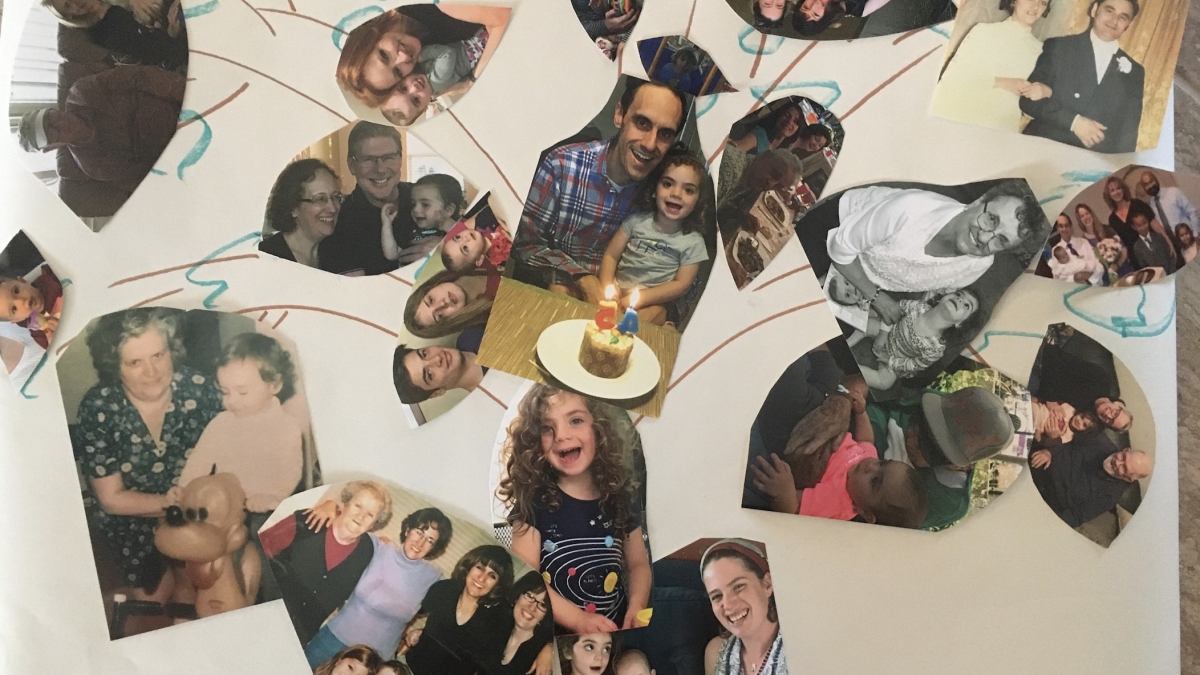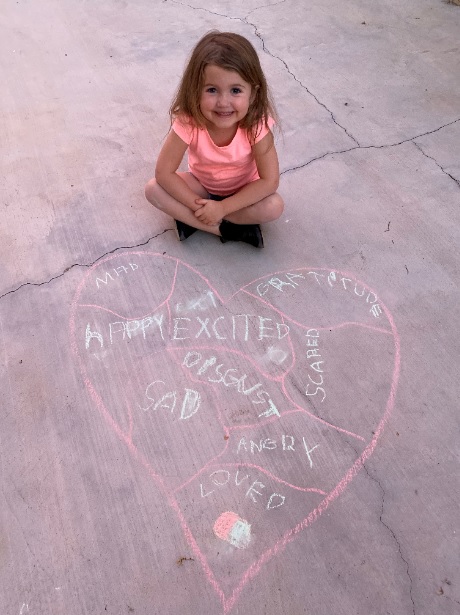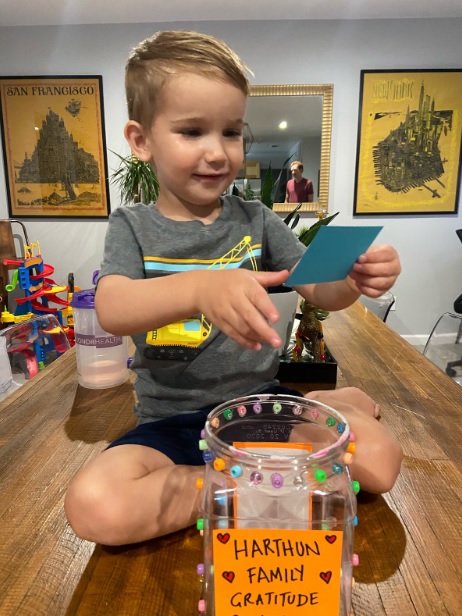ASU-led youth writing program paves the way in transitioning to online instruction

It goes without saying that the benefits of scholastic endeavors go beyond the intellectual. They’re also a way that kids can learn social skills, develop literacy and master how to deal with life’s ups-and-downs.
So when all forms of in-person instruction came to a halt this spring, ASU Associate Professor of English Jessica Early knew she had two choices: She could either cancel the Young Adult Writing Program (YAWP) sessions planned for this summer, or she could act quickly to make them available online and ensure young students still had a place to go for enrichment, peer-to-peer connection and emotional expression.
Obviously, she chose the latter.
A component of the Central Arizona Writing Project, for which Early serves as director, YAWP is a two-week summer youth writing camp offered through ASU’s Department of English.
“Being disconnected from school … can be pretty traumatic in terms of losing access to friends, teachers (and familiar rituals),” Early said. “So from my professor place, but from my mom place first, actually, I really thought this is a need that families have right now, and that kids have, and so I just decided right then and there that we were going to do this.”
YAWP at ASU has traditionally been offered to children ages 4-6 and students entering grades two through 12. This summer, the program introduced a new session for very young children (ages 2-4) and their families, focused on early literacy, with help from a grant awarded through the National Writing Project (the parent organization of the Central Arizona Writing Project) and funded by Panda Express.
“It just seemed like a good way to be family-focused and have a really positive bonding experience during this time,” said Amber Curlee, instructor for the early literacy sessions.

After a camp session discussing different emotions, 4-year-old YAWP participant Hendrix Fitzgerald and her family created a heart map in sidewalk chalk exploring some of the different emotions that she feels. This practice helps children and parents to build a common vocabulary for feelings, and encourages children and their parents/caregivers to practice identifying their emotions. Courtesy of Amber Curlee
A current English doctoral student at ASU, Curlee has taught in Valley high schools for several years. But as the mother of a 10-month-old and a 3-year-old, she wanted to do something for this year’s YAWP that would allow parents of very young children to take advantage of all the time they are now spending at home with them.
“Family literacy is really important because parents and caregivers are working together with their children and supporting them in the literacy process,” Curlee said. “So not only is it helping children grow and building confidence in their literacy abilities, but it’s helping parents grow and work with their kids on building something together. It shows the importance of lifelong learning, which is great for kids to see.”
Every morning for two weeks, YAWP participants meet together via Zoom to share writing exercises they completed the day before, engage in discussion and receive instructions and brainstorm for their next exercise. Later that day, they use Google Classroom to access activities and resources to complete the exercise.
The focus for the first week of the early literacy session was family. Participants spent time talking about different family structures and relationships and working on activities that explored those themes. The theme for the second week was social-emotional learning, wherein children learned how to identify feelings and manage emotions through projects like creating a bad mood plan of what to do and how to communicate when they’re unhappy.
“Everybody’s looked different,” Curlee said. “It was very adaptable to how they were doing that day. Some did videos, some did sidewalk chalk, some did paintings or drawings. And then we shared them during the next session.”
Two-year-old YAWP particpant Luke Harthun worked with his family to create a gratitude jar: They will write down things they are grateful for and place them in the jar in order to shift the family focus to gratitude.
Harthun's mother Jyll said, "We had a lot of fun making our gratitude jar. Luke picked out the beads and I glued them on. We talked about what gratitude means and what it feels like to feel grateful. We helped him come up with a few and are excited to keep this new tradition going."
Older kids dealt with more mature themes, such as activism and imagining what the future might look like.
“A lot of them are just writing about what's going on in their lives right now,” Early said. “It’s one of the main reasons I wanted to do this. I just think giving young people an opportunity to write and express whatever they need to during this time is really important.”
Early’s own children, an 11-year-old daughter and 9-year-old twin boys, are participating as well.
“Especially for my daughter, it’s been really neat for her to be able to connect with other middle school students, because there’s a lot of anxiety about starting school in the fall. But to be able to get to know some other students in this kind of setting has been really good for her,” she said.

Two-year-old Luke Harthun worked with his family to create a gratitude practice. They chose to create a gratitude jar: They will write down things they are grateful for and place them in the jar in order to shift the family focus to gratitude, which has been consistently associated with greater feelings of happiness. Courtesy of Amber Curlee
Moving the entire program online was somewhat of a challenge. Aside from technical and logistical issues, all the instructors had to be trained in online teaching, something Early called a “profound professional development experience” for them, considering many had never taught virtually before but may have to at some point this fall.
It’s a feat Early said wouldn’t have been accomplished without the great team she had to help her along the way, including her assistant Tina Norgren and Kathleen Hicks, principal lecturer and director of online programs in the Department of English.
And as the first of the YAWP sites in the country to go virtual, the ASU team served as a leader for others looking to make the same transition.
“When word got out that I was putting the camps online, other directors around the country started contacting me to help them figure out how to do the same,” Early said. “So our site really led the way to figure out how to do that.”
In addition, the ASU iteration of YAWP was able to serve participants from other states where the program was not able to go virtual, including Washington, Oregon, Texas, California and Nevada.
They were even able to find a way to continue the YAWP tradition of inviting a guest writer to visit the camps. Young adult author Dusti Bowling, a Scottsdale native who has won awards for such novels as “Insignificant Events in the Life of A Cactus,” joined both the younger YAWP participants and the older kids in two different Zoom meetings that she adapted to their age levels.
Each YAWP session is capped off with a celebration on the last day of camp where participants read their final pieces to the rest of their class before they are published in an anthology. Because it’s all online this year, they were able to invite friends and relatives from far away locales, something they couldn’t have done before.
In light of the resounding success of this year’s virtual YAWP, Early said she and her team are considering the possibility of adding an online option for participants next year as well, in addition to the in-person camps available in June at ASU’s Tempe, Downtown Phoenix and West campuses.
“Especially with the heat in Arizona, no one really wants to do anything in July,” she said with a knowing laugh. “And a lot of people leave, too. But we think if we offer YAWP online in July, it can be a way for parents who are traveling or on vacation and want some enrichment for their kids to be able to give that to them.”
Top photo: Four-year-old YAWP participant Margaret Gaspar worked with her family to create a family tree in order to explore their family history and discuss what family means to them. Courtesy of Amber Curlee
More Arts, humanities and education

Upcoming exhibition brings experimental art and more to the West Valley campus
Ask Tra Bouscaren how he got into art and his answer is simple.“Art saved my life when I was 19,” he says. “I was in a dark place and art showed me the way out.”Bouscaren is an …

ASU professor, alum named Yamaha '40 Under 40' outstanding music educators
A music career conference that connects college students with such industry leaders as Timbaland. A K–12 program that incorporates technology into music so that students are using digital tools to…

ASU's Poitier Film School to host master classes, screening series with visionary filmmakers
Rodrigo Reyes, the acclaimed Mexican American filmmaker and Guggenheim Fellow whose 2022 documentary “Sansón and Me” won the Best Film Award at Sheffield DocFest, has built his career with films that…

